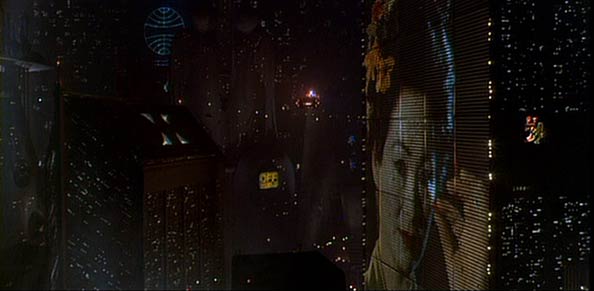February 3, 2007
Code 46
Movie Review By: SFAM
Directed by: Michael Winterbottom
Written by: Frank Cottrell Boyce
Degree of Cyberpunk Visuals: Low
Correlation to Cyberpunk Themes: High
Key Cast Members:
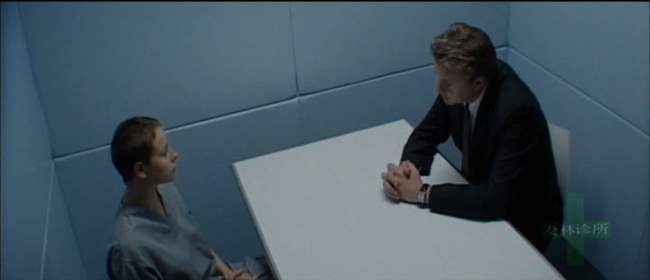
Overview: Code 46 is a movie that generates significant disagreement on ratings. The pacing is glacially slow, but there are enough interesting ideas that many viewers will really dig the final product. Viruses as transhuman upgrades, memory removal, and problems brought on by mass cloning all are mashed together to give an interesting, but somewhat incoherent view of a near-term dystopic future. The cinematography is interesting, and the story itself may end up working well enough for some to enjoy the final product.
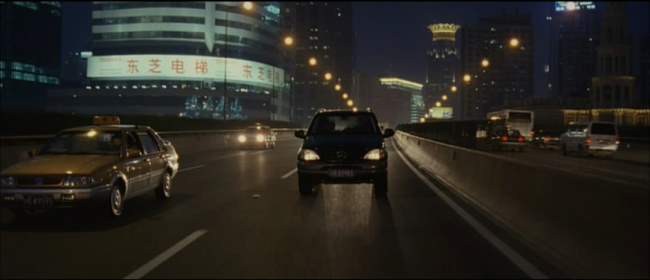
The Setting: Code 46 takes place in a non-specific near future, where overpopulation and degradation of the earth have led to a situation where cities have become protected entities. The population is now divided into those living in the outside and those citizens who have rights to live within. Each city has restricted access – a person is required to have “papelles” (a valid passport/visa) to enter. For some reason, even though there is massive overpopulation, cloning has been used in an overabundant fashion. There is even a law, Code 46, which restricts the relations between those who are genetically similar. Viruses have been genetically engineered to allow new capabilities for people, but also have become so deadly that people must have a valid insurance policy to stay in the city.
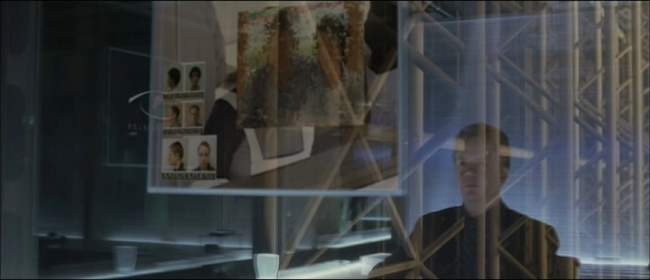
The Story: William Geld, played by Time Robbins, is an insurance investigator imbued with an empathy virus, who’s been tasked to track down a forged papelle ring in Shanghai. Shortly after arriving, William quickly determines that the guilty party is a worker named Maria Gonzales (Samantha Morton), but he doesn’t turn her in. For some reason, even though he is happily married, he is strangely attracted to Maria, so he falsely implicates someone else. After following her home, Maria and William become fall for one another. William leaves the next day for home, but is brought back a few weeks later when the forged papelles continue to be produced. He decides to turn Maria in, but she has left. After investigating, he finds that she had incurred a code 46 violation. William fears that he is the genetically similar party and sets off to find her.
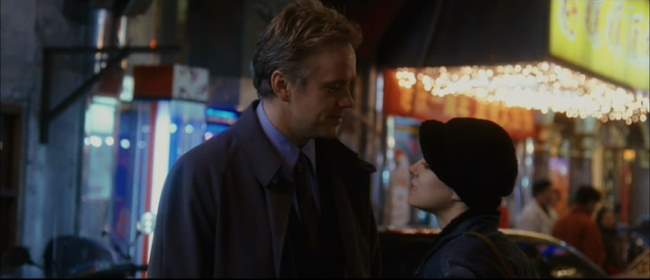
The Acting: Director Michael Winterbottom seems to be going for a Lost in Translation type vibe, but this feel doesn’t really work very well. The leads both turn in believable performances, but something is missing. While the world certainly has an alienated feel, there’s never a sense that the chemistry William and Samantha is strong enough to support a “genetic attraction.” It’s all cerebral. Unfortunately, with the rediculously slow pacing of the movie, this merely adds disconnectedness with the audience.
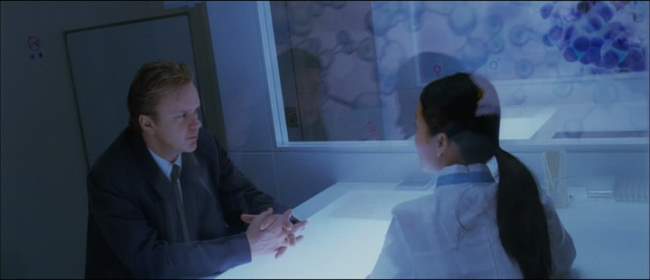
Viruses as Genetic Upgrades: In Code 46, custom made viruses are used for short to long term sensory upgrades. William has an “empathy” virus which allows him to read people’s thoughts. Other viruses allow skills to be developed. The weird thing about the use of viruses as an idea for genetic manipulation is that it causes all sorts of dangerous linkages. For instance, viruses can be passed on, and worse, can change over time. This, I think, is why insurance may play such a large role in Code 46, and why the cities are cordoned off (again, this isn’t really explored all that well). It does make you wonder though, how exactly will genetic manipulation be used in the future? If we are to look for transhuman-like upgrades, are we going to be purchasing an ensemble of cocktail viruses?

Futuristic Low-budget Worldbuilding: Without a large budget, and the absence of CG, director Winterbottom struggles to make his world look futuristic. Mostly based on locations, Winterbottom also emphasizes pastel florescent shades to indicate futurism. Pastel florescent pinks, greens, and blue tones are used in most of the otherwise normal looking city scenes. The outside world is mostly desert, apparently brought on by the effects of global warming, whereas the people all dress like they’re in New Dehli. The night scenes are generally neon shots of Shanghai, which sort of fit in the cyberpunk, near-future genre. Still, there are glaring problems which break suspension of disbelief, where the futuristic world looks identical in most places. The most obvious one deals with the liberal use of modern day cars - apparently the auto industry got laid off after 2003. A cheap solution would have been to jimmy up a few futuristic fiberglass bodies to stick on-top of a jeep or VW, but instead, we are almost left with an alternate view of the present.
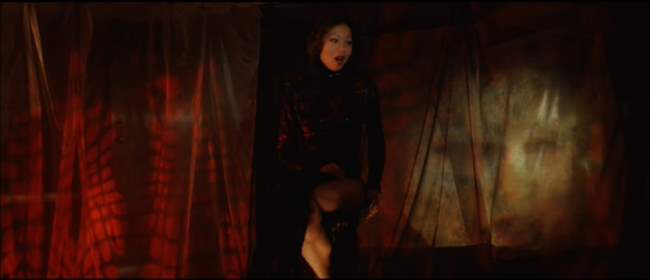
Cyberpunk Tower of Babel – the Creole Merging of Languages: In Code 46, English seems to be the only language used, but it has been “creoled” in that many of the words have been replaced with words from other languages. Boy and girl is now chico and chica; paper is now papelle; hello has been transformed to “meehow”; discontinued is now discontinuago. The cool part about this is how naturally the actors work the word changes into the dialogue. The problematic part of this is that within 50 years or less, the world (even if only the industrial parts) would transform into a single language. If there even is a trend toward this, I think we’d be looking more like 300-500 years for a place like Shanghai to do away with their native Chinese. The more interesting question this raises though is the issue of whether the human race is moving toward a reverse Tower of Babel, or whether the local cultures will become more entrenched as a defense against a globalized language and culture. The world is getting smaller all the time – the implications of this are far from understood right now.
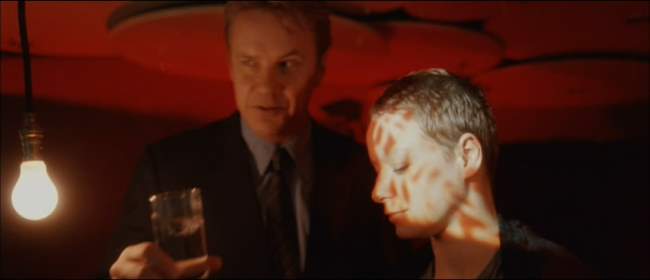
Cyberpunk Oedipus Complex: Harkening back to Freud, Code 46 explores the issue of a man in love with his mother. In Code 46, this connection is so strong that it exists even when the relationship itself is not known to the participants. Personally, I never bought into anything as generalized as Freud’s Oedipus complex, and I don’t know that it works all that well here. But the genetic/cloning slant to this question certainly raises some interesting thoughts. Still, with the advent of overpopulation, its hard to see why people would resort to making an abundance of clones. Perhaps for nefarious thoughts such as body replacement parts, but it would be a stretch for an overpopulated world to create massive versions of the same person. Based on the huge insurance slant in Code 46, we might assume it had something to do with contaminated bodies, but like so many other aspects of this future world, this is never really explained.
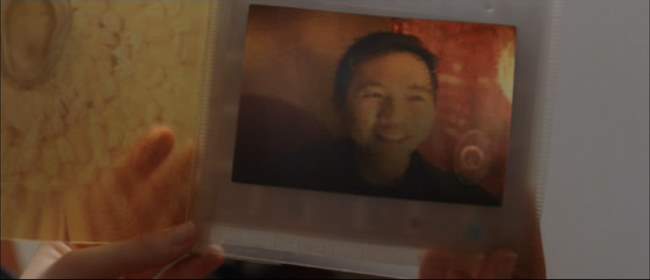
Removal of Memories: The idea of memory modification and their removal has been explored in other movies (Eternal Sunshine of the Spotless Mind, for instance), but the general question is probably similar. Are memories discrete entities that can be targeted and wiped out, or is something more organic going on? Also, if your spouse cheats on you, will a future option for conflict resolution be to simply have the memories of the offending person and the deed itself removed? If so, would you still think your spouse cheated?
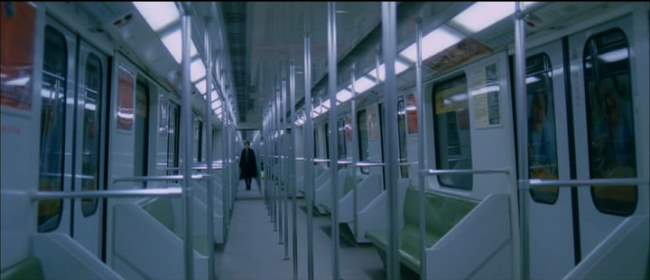
The Bottom Line: Although the plot runs at a glacial pace, and the chemistry between the actors is stilted at best, the inclusion of interesting thoughts, however haphazard, potentially make Code 46 worth a watch. I would have liked to see a bit more clarity on the basis for the technology selections, and definitely would have liked to see more emotive chemistry between the leads. The “Lost in Translation” vibe just doesn’t work here all that well. Bottom line, if you’re someone who doesn’t mind watching interesting looking paint dry, you might end up liking Code 46.

